The Iconic Digital Delay, Enhanced for Modern Players
BOSS’s iconic DD-3 Digital Delay has been a pedalboard staple since 1986, loved everywhere for its great sound and simple operation. With the DD-3T, we’ve updated the classic stomp with enhanced functionality while fully retaining the original’s sound and control layout. It’s now possible to tap in delay tempos using the onboard switch or an external one, with your choice of three beat subdivisions. And the direct output jack has been moved next to the main output, providing easier connectivity for wet/dry setups.
-

Features
- Updated version of the industry-standard DD-3, with enhanced functionality for modern players
- Ultra-easy operation for fast sound creation
- Delay time of 12.5 to 800 ms, divided into three ranges for quick setup
- Tap in tempos with the onboard pedal switch or an external footswitch
- Short Loop setting for creating phrase loops (same as the Hold function on the original DD-3)
- Direct output for sending dry and wet sounds to separate amps
- Main and direct output jacks now positioned on one side of the pedal
- BOSS five-year warranty

A Classic Through and Through
In continuous production for over three decades, the DD-3 has been the go-to delay stomp for countless players. Based on the DD-2—the world’s first digital delay pedal from 1983—the DD-3 is revered for its warm, round delay tone and simple controls that let you dial in sounds fast. The DD-3T’s sound circuitry and controls are identical to the DD-3, delivering every drop of that classic vibe you know and love.

Tap Tempo On Board
A key addition the DD-3T brings is tap tempo, an essential feature for creating the rhythmic delay effects at the heart of many guitar styles. In delay mode, hold the pedal switch for two seconds to toggle between bypass and tap operation. And for on-demand tap control, simply connect an external footswitch. When the DD-3T receives tap input, up to 800 ms of delay time is available, and the Mode knob sets the tap subdivision (quarter-note triplet, dotted-eighth note, or quarter note).

Direct Out for Wet/Dry Setups
The DD-3T features a direct output jack like the DD-3, but it’s been moved next to the main output jack to make connections easier. Plugging a cable into the direct out converts the main out to delay only, allowing you to send wet and dry signals to different amps for wide, immersive sounds. And if your amp or switcher has a parallel effects loop, just connect a dummy plug to the direct out to mute the dry sound for effect-only blending.

Hold That Loop
The original DD-3 (and DD-2 before) included a forward-thinking Hold function, which allowed you to capture a sound up to 800 ms long, play it continuously, and jam over the top. Many years later, BOSS further developed this creative concept with the successful Loop Station products, which helped spawn the new musical style of live looping. The DD-3T includes the same Hold function as the DD-3, but it’s been renamed “Short Loop” to reflect today’s common usage.
Guide/Articles
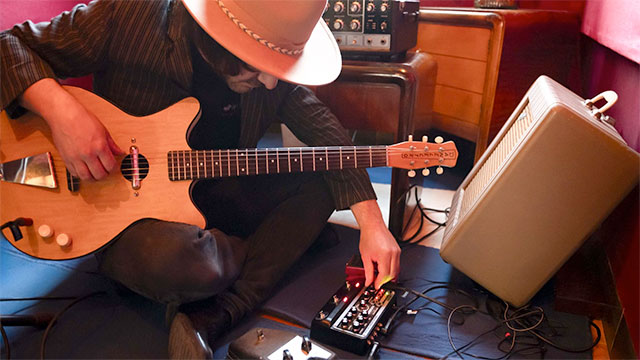
Reverberations: Alessandro “Asso” Stefana
Enter the enigmatic world of Alessandro Stefana—guitarist, composer, and sonic explorer—in this rare interview on sound, gear, and vision.Read more…
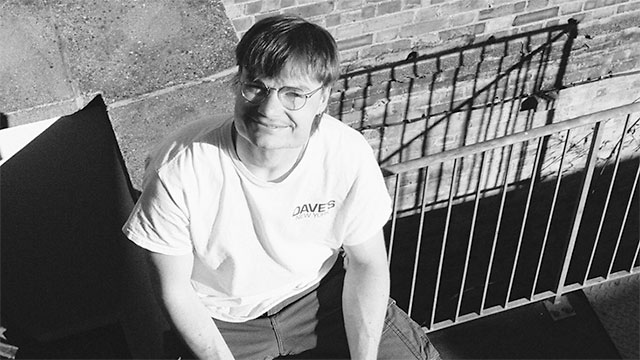
Behind the Board: Bob Mackenzie with James Blake
Find out how James Blake’s engineer Bob Mackenzie uses BOSS pedals in the studio to elevate tracks in this behind-the-scenes interview.Read more…
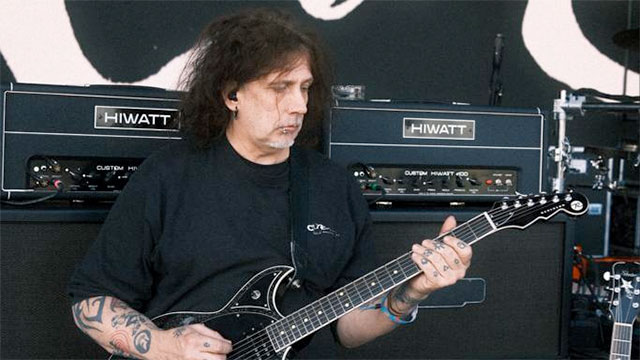
Behind the Board: Al Robinson with The Cure Guitarist Reeves Gabrels
Al Robinson, Reeves Gabrels’ longtime tech, breaks down his gear, vast pedal collection, BOSS tattoos, and why Gabrels is “the best tech.”Read more…

Behind the Board: Gavin Maxwell with Mogwai and IDLES
Guitar tech Gavin Maxwell shares pro pedalboard tips and unique insights into the signature sounds of Mogwai and IDLES.Read more…
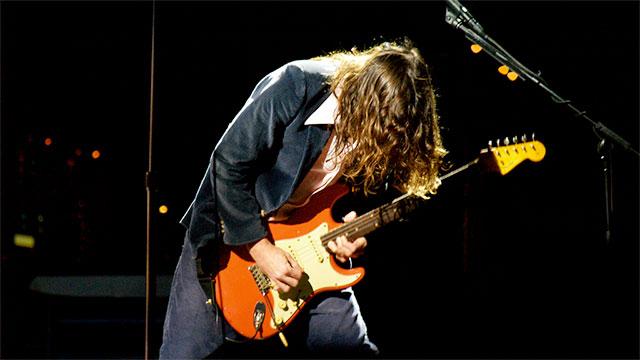
Behind the Board: Dave Lee with John Frusciante of the Red Hot Chili Peppers
Top-tier guitar tech Dave Lee shares behind-the-scenes insights from his time working with John Frusciante of the Red Hot Chili Peppers.Read more…
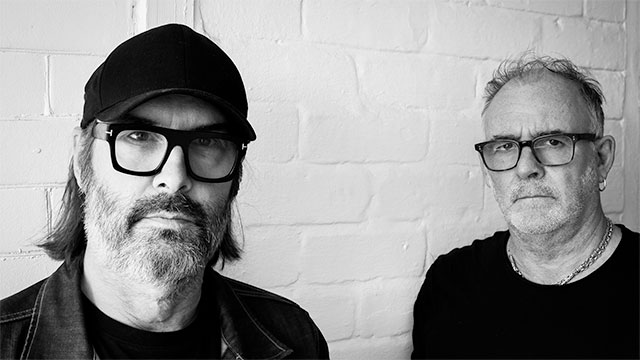
Reverberations: Portishead’s Adrian Utley and Jim Barr with 137
We explore the making of the all-star experimental jazz ensemble’s astounding new release, Strangeness Oscillation.Read more…
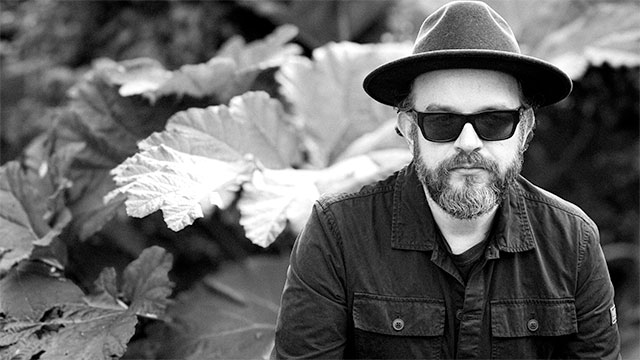
Behind the Board: Tom Dalgety with Ghost, Pixies, Royal Blood, and The Cult
The award-winning rock producer shares his top tips and tricks for using BOSS pedals to create number-one records.Read more…

Behind the Board: Dan Cleary with Dave Navarro of Jane’s Addiction
Dave Navarro and Eric Avery’s trusted tech reveals the secrets to the signature sounds of alt-rock icons Jane’s Addiction.Read more…
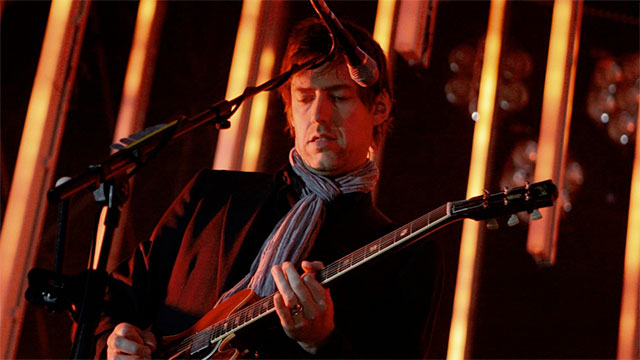
Reverberations: Ed O’Brien of Radiohead
The echo aficionado reveals his favorite stompboxes and explains why “BOSS has been at the forefront of all this incredible music.”Read more…
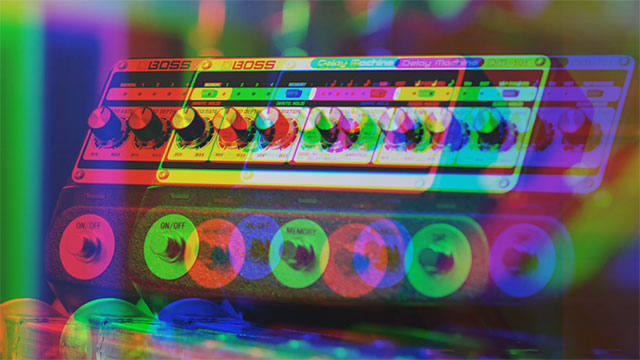
Echoes in Time: The History of BOSS Delay Pedals
Come along as we run down the entire history of BOSS delay pedals through the years, from 1978 all the way up to the present day.Read more…
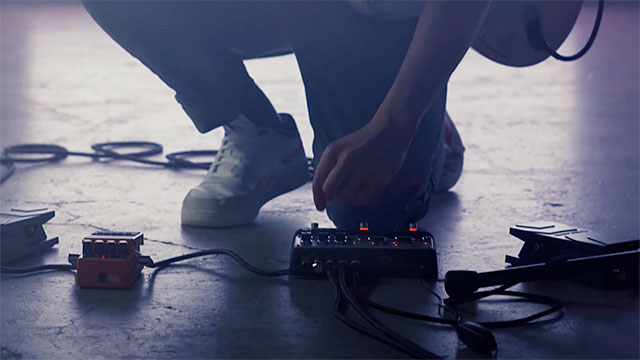
Using Delay for Specific Genres
Whether you’re seeking crisp echoes, tape saturation, or subtle analog delays for a slapback effect, here are genre tips for every style.Read more…
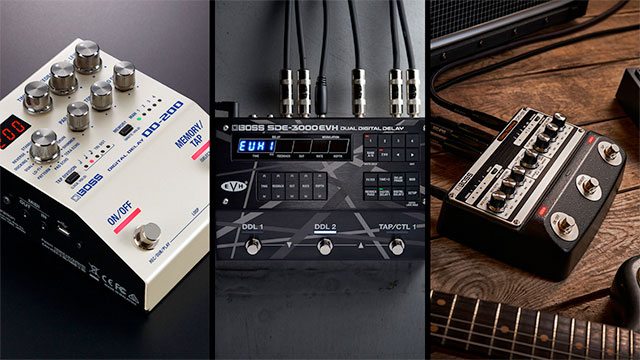
Exploring the Differences Between BOSS Delay Pedals
Explore the differences between BOSS delay pedals so you can decide which BOSS delay is perfect for your sound and playing style.Read more…
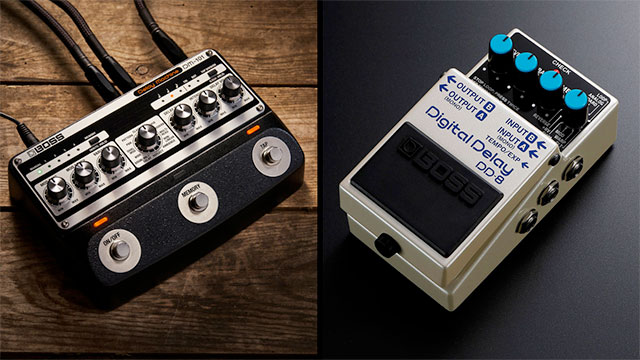
Comparing Analog and Digital Delay Pedals
Learn the differences between analog and digital delay guitar pedals and how to best utilize them in your setup.Read more…

Popular Delay Pedal Artists and Their Iconic Sounds
Examine some of the most popular delay artists and their iconic sounds. Then, explore their pedals and how to capture their iconic tones.Read more…
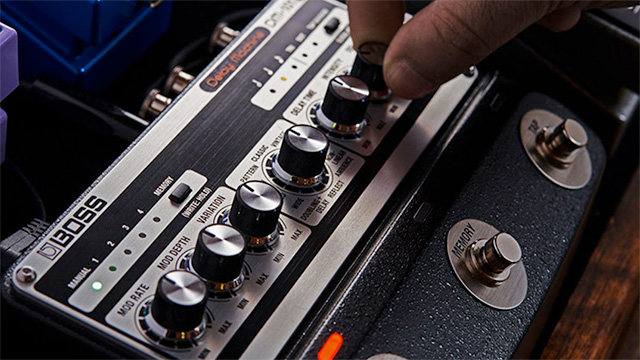
The Delay Pedal Glossary
Explore this comprehensive delay pedal glossary to learn about attack, feedback, wow, flutter, and everything in between.Read more…
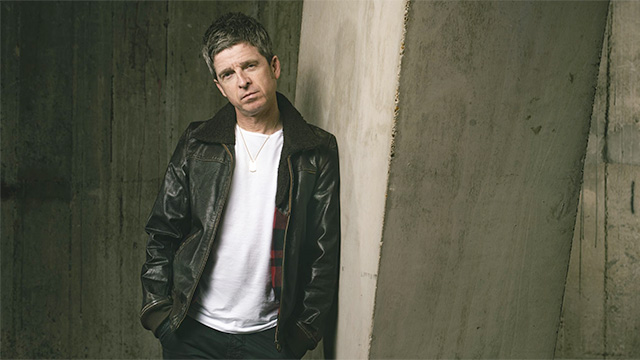
Reverberations: Noel Gallagher
The Manchester master tunesmith opens up about the magic of guitar, the role of effects, and his endless search for melodies.Read more…
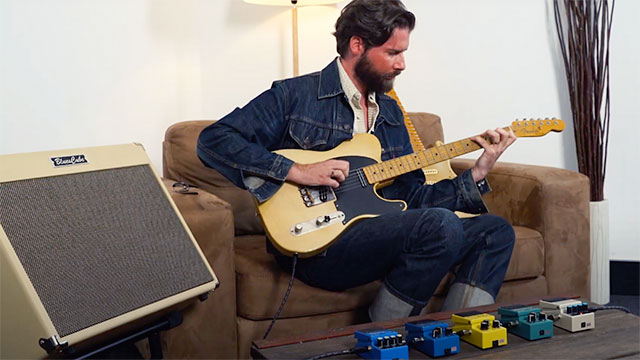
Guitar Pedals Go Country
Country music uses pedals differently than other genres. Explore the style’s effects history and learn to use stompboxes to get that twang.Read more…
- Specifications
- Nominal Input Level
- -20 dBu
- Input Impedance
- 1 M ohm
- Nominal Output Level
- -20 dBu
- Output Impedance
- 1 k ohm
- Recommended Load Impedance
- 10 k ohms or greater
- Bypass
- Buffered bypass
- Controls
- MODE knob
TIME knob
FEEDBACK knob
E.LEVEL(Effect Level) knob
Pedal switch - Indicator
- CHECK indicator (Used for indication of check battery)
- Connectors
- INPUT jack: 1/4-inch phone type
OUTPUT jack: 1/4-inch phone type
DIRECT OUT jack: 1/4-inch phone type
TEMPO jack: 1/4-inch phone type
DC IN jack - Power Supply
- Alkaline battery (9 V, 6LR61)
AC adaptor (PSA series: sold separately) - Current Draw
- 70 mA
- Expected battery life under continuous use
- Alkaline: Approx. 5 hours
*These figures will vary depending on the actual conditions of use. - Accessories
- Leaflet (“USING THE UNIT SAFELY,” “IMPORTANT NOTES,” and “Information”)
Alkaline battery (9 V, 6LR61) - Options (sold separately)
- AC adaptor: PSA series
Footswitch: FS-5U, FS-6, FS-7 - Size and Weight
- Width
- 73 mm
2-7/8 inches - Depth
- 129 mm
5-1/8 inches - Height
- 59 mm
2-3/8 inches - Weight (including battery)
- 420 g
15 oz - * 0 dBu = 0.775 Vrms
- *The specifications are subject to change without notice.

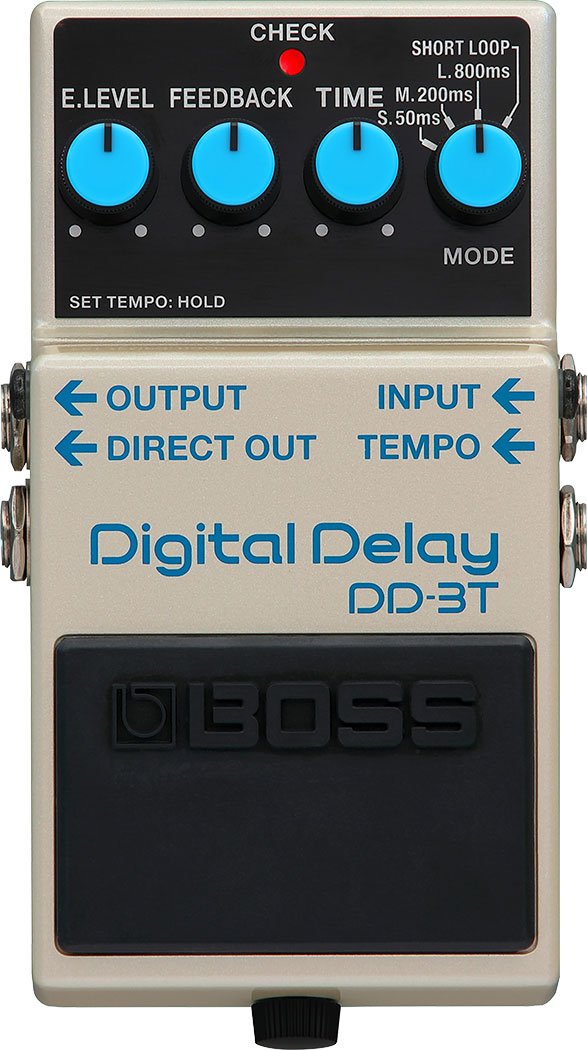
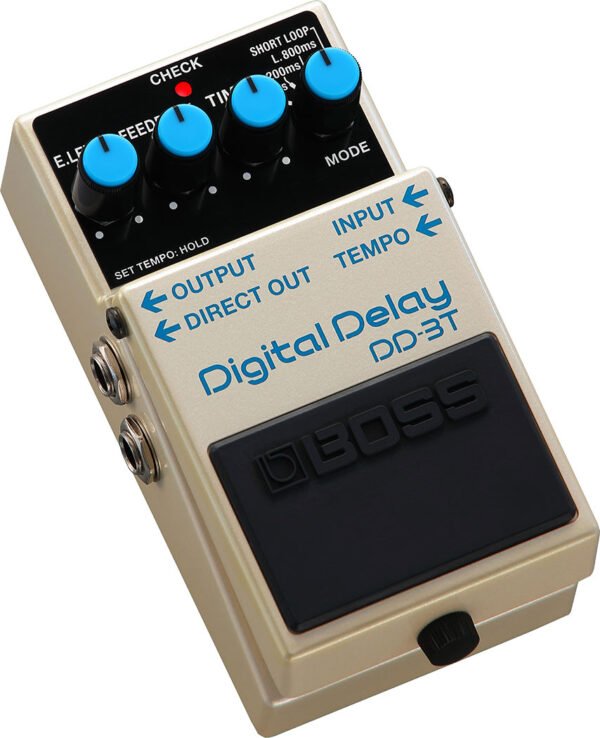
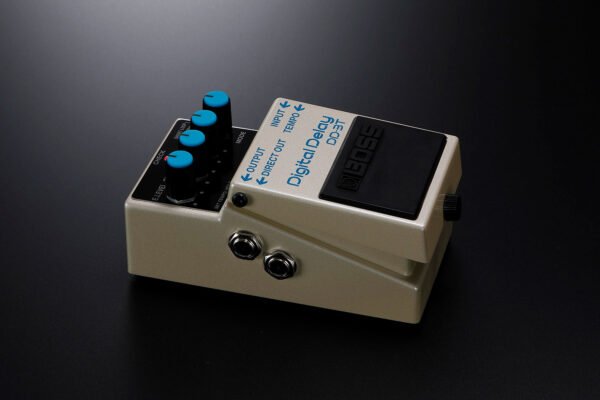
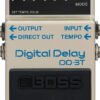
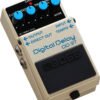
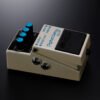
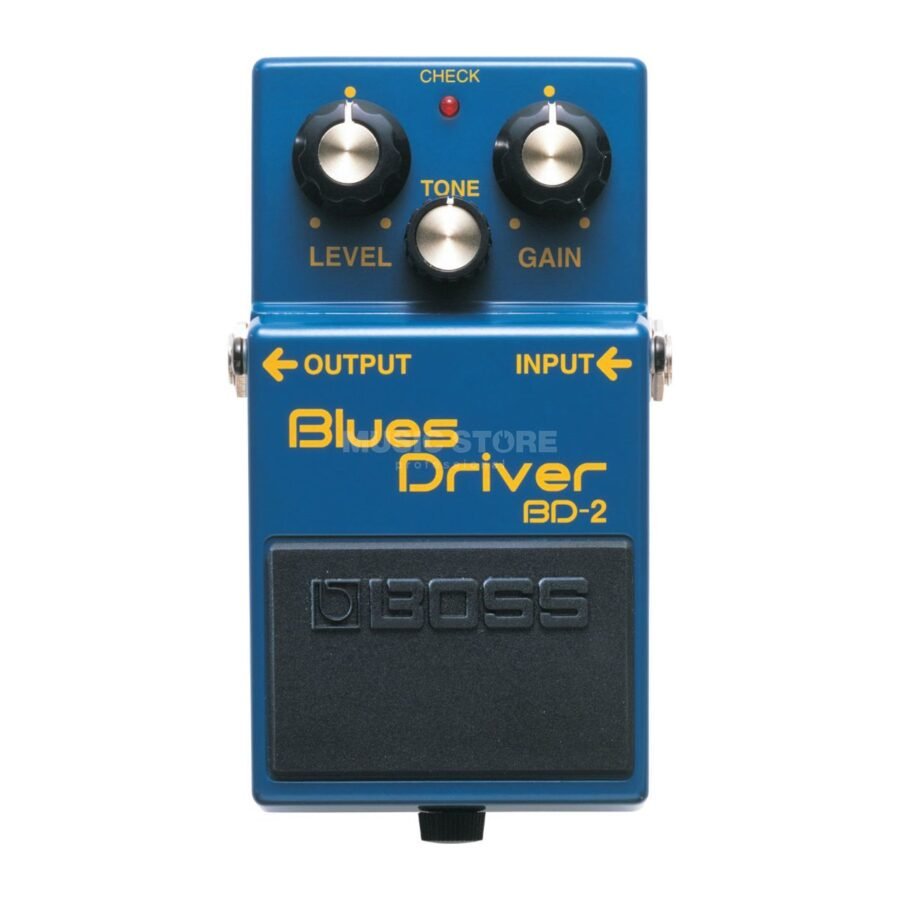
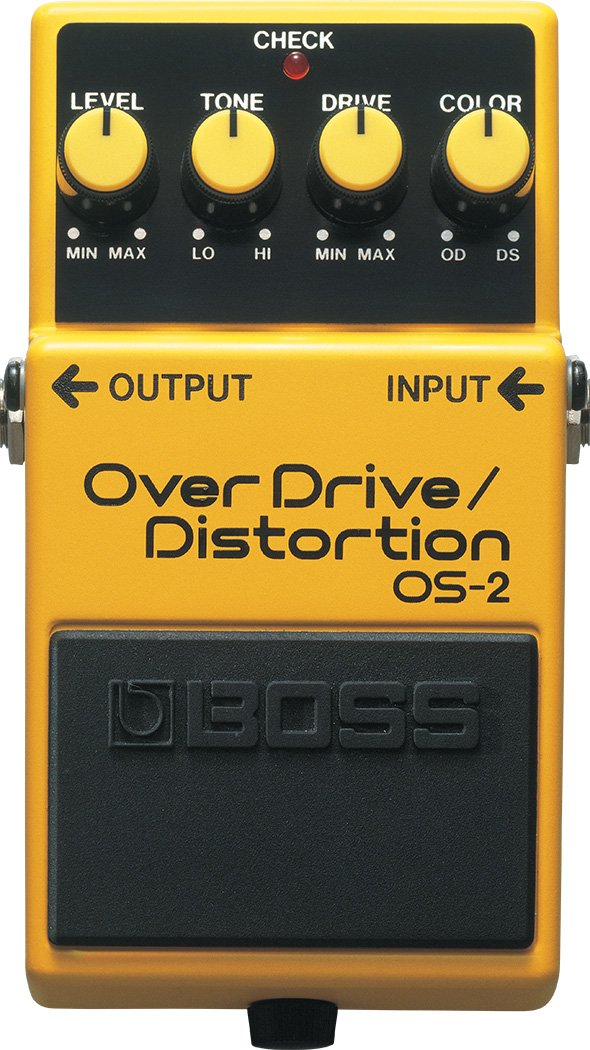
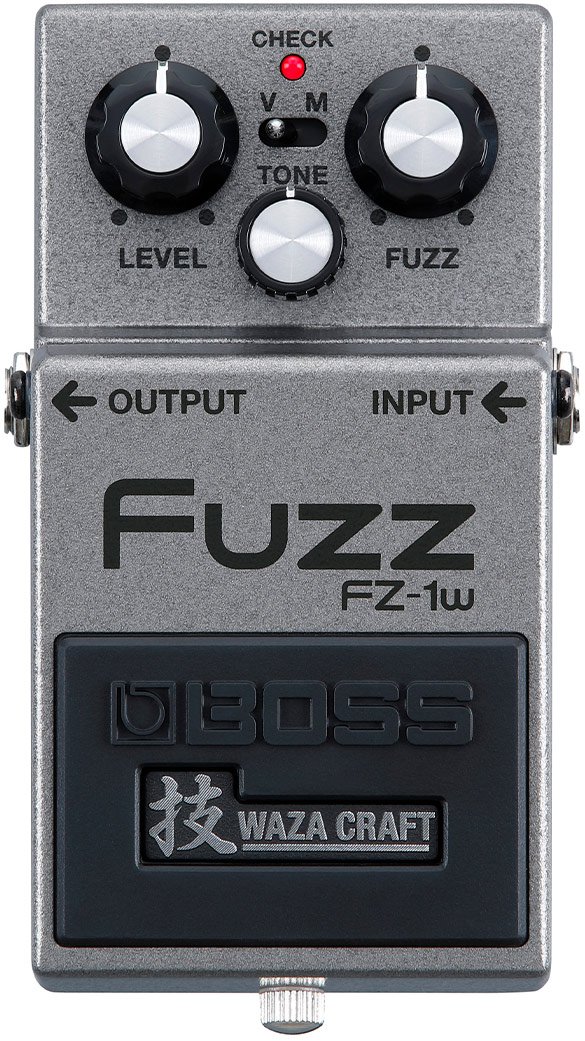
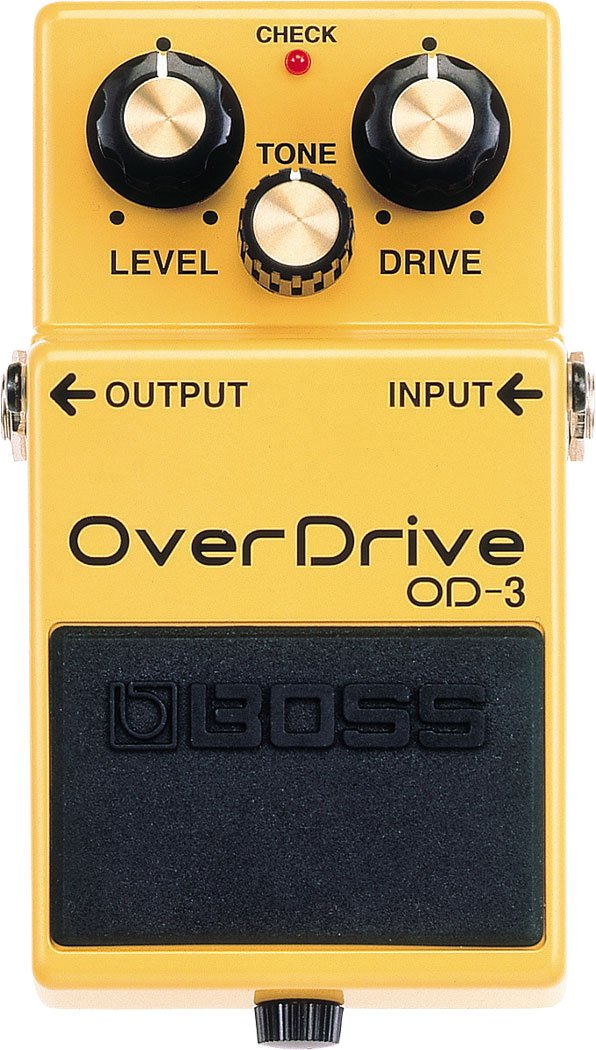
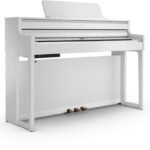
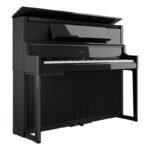
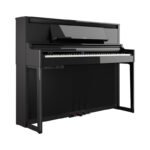
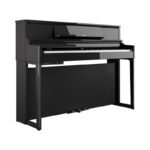
Reviews
There are no reviews yet.